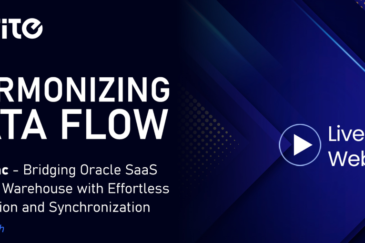The Best Tool to Query Oracle Database

- May 31, 2022
- Jhansi Rani
- 0
Published On May 31, 2022
Queries are primarily used to find specific data by filtering certain criteria. Database query tools also help you automate data management tasks, summarize data and perform complex calculations. An Oracle Database Query Tool retrieves data from tables and manipulates this data (insert, update or delete records in the database tables). It is commonly known as Structured Query Language (SQL) because Oracle Database is a structured database where data is stored in tables – i.e., rows and columns.
Benefits of Oracle Database Query Tools
Oracle Database Query Tools shows all the tables, definitions, and content in your database and allow you to develop and save queries against the tables quickly. Query tools can read the tables and provide you with comprehensive information about the objects in your Oracle Database. This doesn’t just include the tables and views and triggers, procedures, packages, tablespaces, and security rights.
Oracle Database Query Tools also provides valuable capabilities for DBAs, developers, and data analysts, including a powerful GUI query builder for quickly building complex queries. They also offer users better visibility into their database, with greater simplicity and ease of use.
Types of Queries in an Oracle Database
There are five types of queries for an Oracle Database:
SELECT: The SELECT query retrieves data from one or more tables in the Oracle Database. Data manipulation is not required when we execute this query.
INSERT: The INSERT query is used to add one or more records to a table in the Oracle Database. It involves data manipulation in the table.
UPDATE: The UPDATE query is used to update existing records in a table in the Oracle Database. You can use this query in two ways – either to update the records directly or by using the SELECT query to retrieve the value and then update the records.
DELETE: The DELETE query is used to delete or remove existing records from a table in the Oracle Database. One key consideration while deleting records based on conditions is that you must use the WHERE clause; otherwise, you will delete all the records from the table.
TRUNCATE: The TRUNCATE query is also used to delete records from an existing table in the Oracle Database. The difference is that DELETE is a DML command, whereas TRUNCATE is a DDL command. This difference means that the TRUNCATE query cannot be rolled back upon execution. It can only be rolled back if it is part of a transaction.
CloudMiner - Oracle Database Query Tool
Are you looking for SQL capabilities to query your Oracle Database? CloudMiner is an Oracle Database Query Tool from RiteSoftware that meets all your needs. You can connect with multiple cloud PODs, run ad-hoc queries, and validate your code to improve performance.
CloudMiner uses a native desktop interface that runs reliably and efficiently against all Oracle Cloud SaaS applications (Oracle ERP Cloud, HCM Cloud, or any fusion cloud) within seconds. Results are displayed as a traditional on-premise database query tool. CloudMiner runs a query in Oracle Database and displays results in just 3.4% of the time otherwise needed.
Benefits of CloudMiner
For Business Users
- Run ad-hoc queries (provided by IT) on your own in your Oracle Database
- Export and analyze data in spreadsheets
- Quickly compare setups across multiple points of delivery
- Run queries while debugging and on production databases
For IT Users
- Quickly monitor running processes in Oracle Cloud Applications like HDLs, HCM Extracts, etc.
- Develop ad-hoc queries faster using auto-completion and snippet shortcuts
- Standardize code using snippets for standard queries

Services
Products
Company
Copyright © 2024 Rite Software Solutions & Services LLP. All rights reserved.



